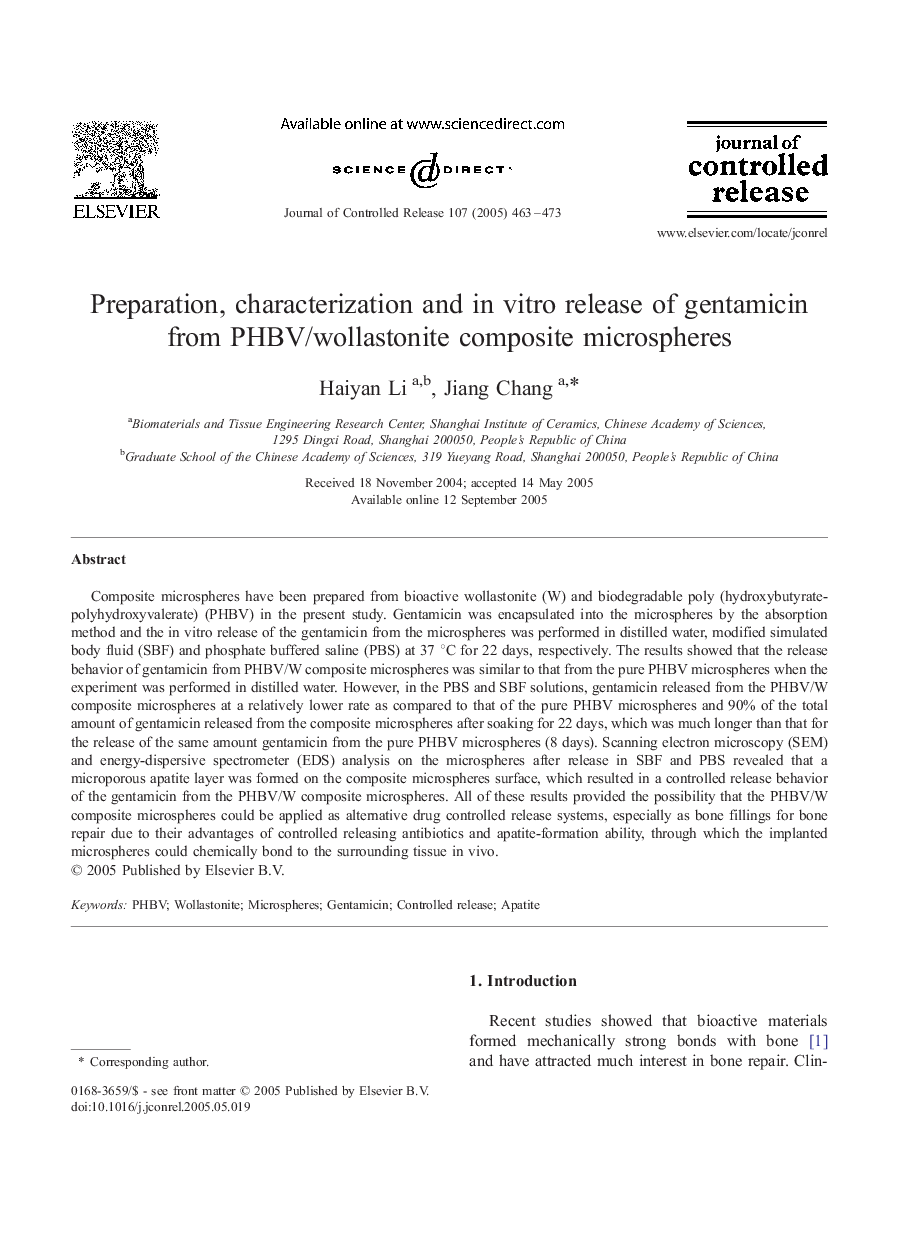| Article ID | Journal | Published Year | Pages | File Type |
|---|---|---|---|---|
| 10613346 | Journal of Controlled Release | 2005 | 11 Pages |
Abstract
Composite microspheres have been prepared from bioactive wollastonite (W) and biodegradable poly (hydroxybutyrate-polyhydroxyvalerate) (PHBV) in the present study. Gentamicin was encapsulated into the microspheres by the absorption method and the in vitro release of the gentamicin from the microspheres was performed in distilled water, modified simulated body fluid (SBF) and phosphate buffered saline (PBS) at 37 °C for 22 days, respectively. The results showed that the release behavior of gentamicin from PHBV/W composite microspheres was similar to that from the pure PHBV microspheres when the experiment was performed in distilled water. However, in the PBS and SBF solutions, gentamicin released from the PHBV/W composite microspheres at a relatively lower rate as compared to that of the pure PHBV microspheres and 90% of the total amount of gentamicin released from the composite microspheres after soaking for 22 days, which was much longer than that for the release of the same amount gentamicin from the pure PHBV microspheres (8 days). Scanning electron microscopy (SEM) and energy-dispersive spectrometer (EDS) analysis on the microspheres after release in SBF and PBS revealed that a microporous apatite layer was formed on the composite microspheres surface, which resulted in a controlled release behavior of the gentamicin from the PHBV/W composite microspheres. All of these results provided the possibility that the PHBV/W composite microspheres could be applied as alternative drug controlled release systems, especially as bone fillings for bone repair due to their advantages of controlled releasing antibiotics and apatite-formation ability, through which the implanted microspheres could chemically bond to the surrounding tissue in vivo.
Related Topics
Physical Sciences and Engineering
Materials Science
Biomaterials
Authors
Haiyan Li, Jiang Chang,
